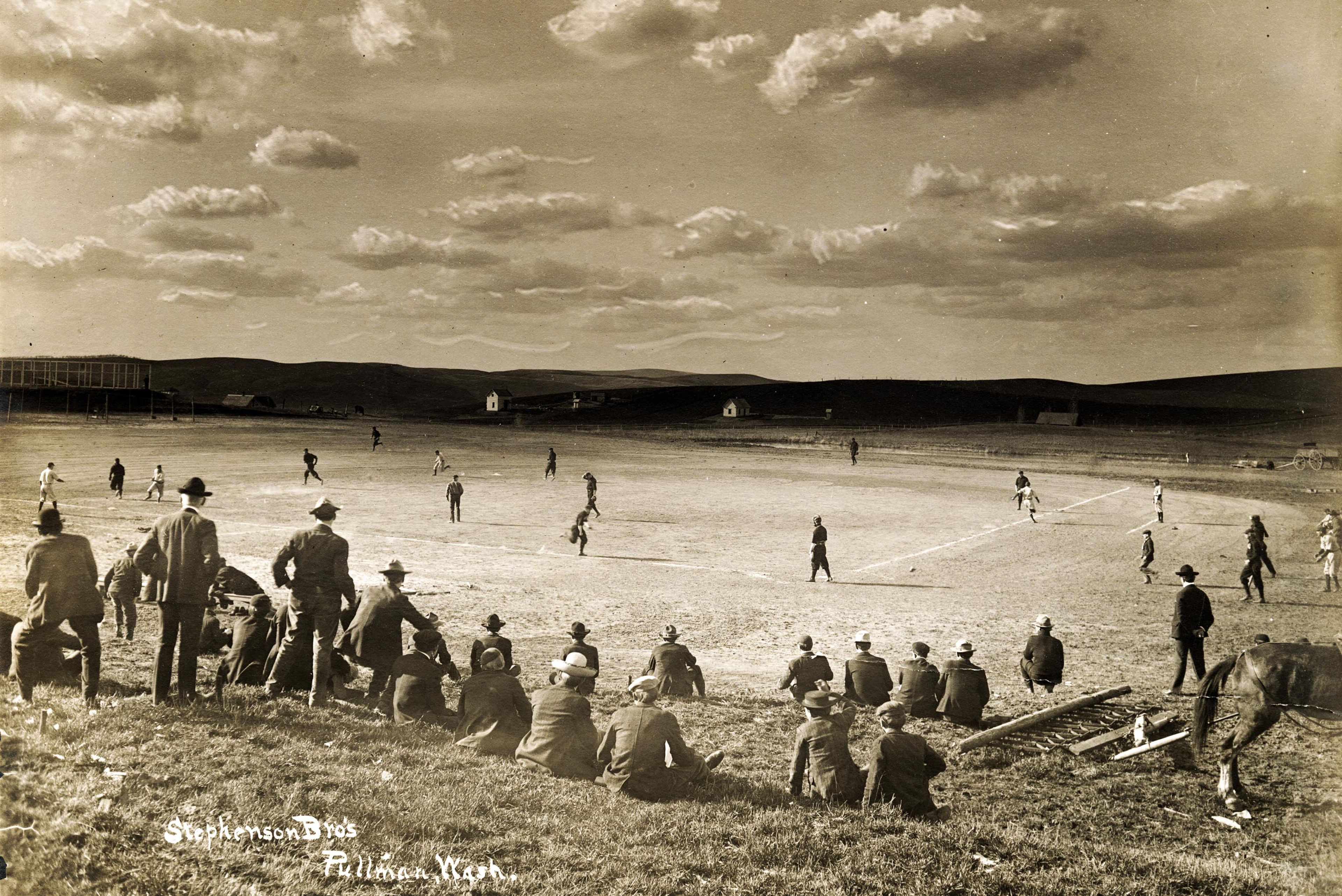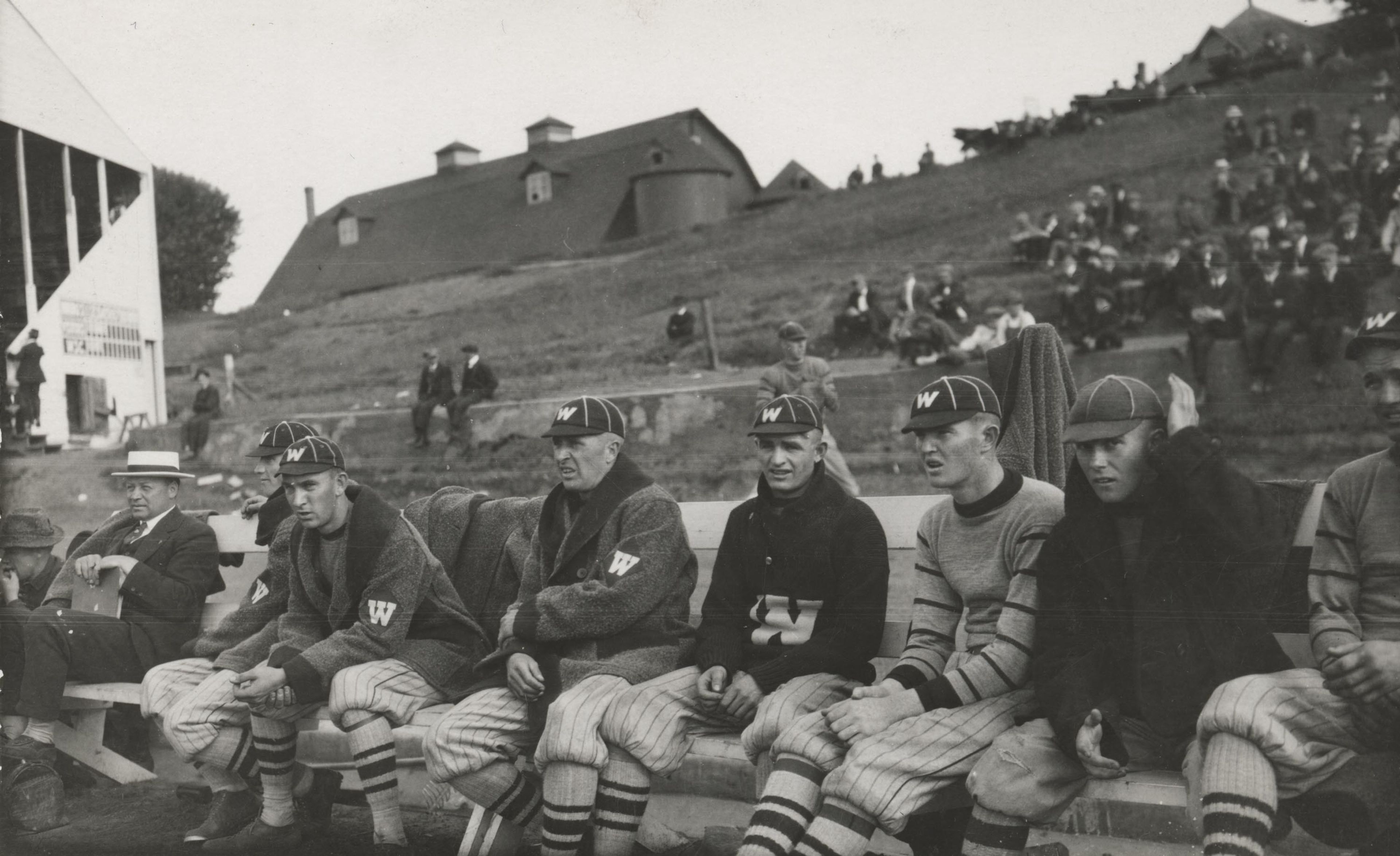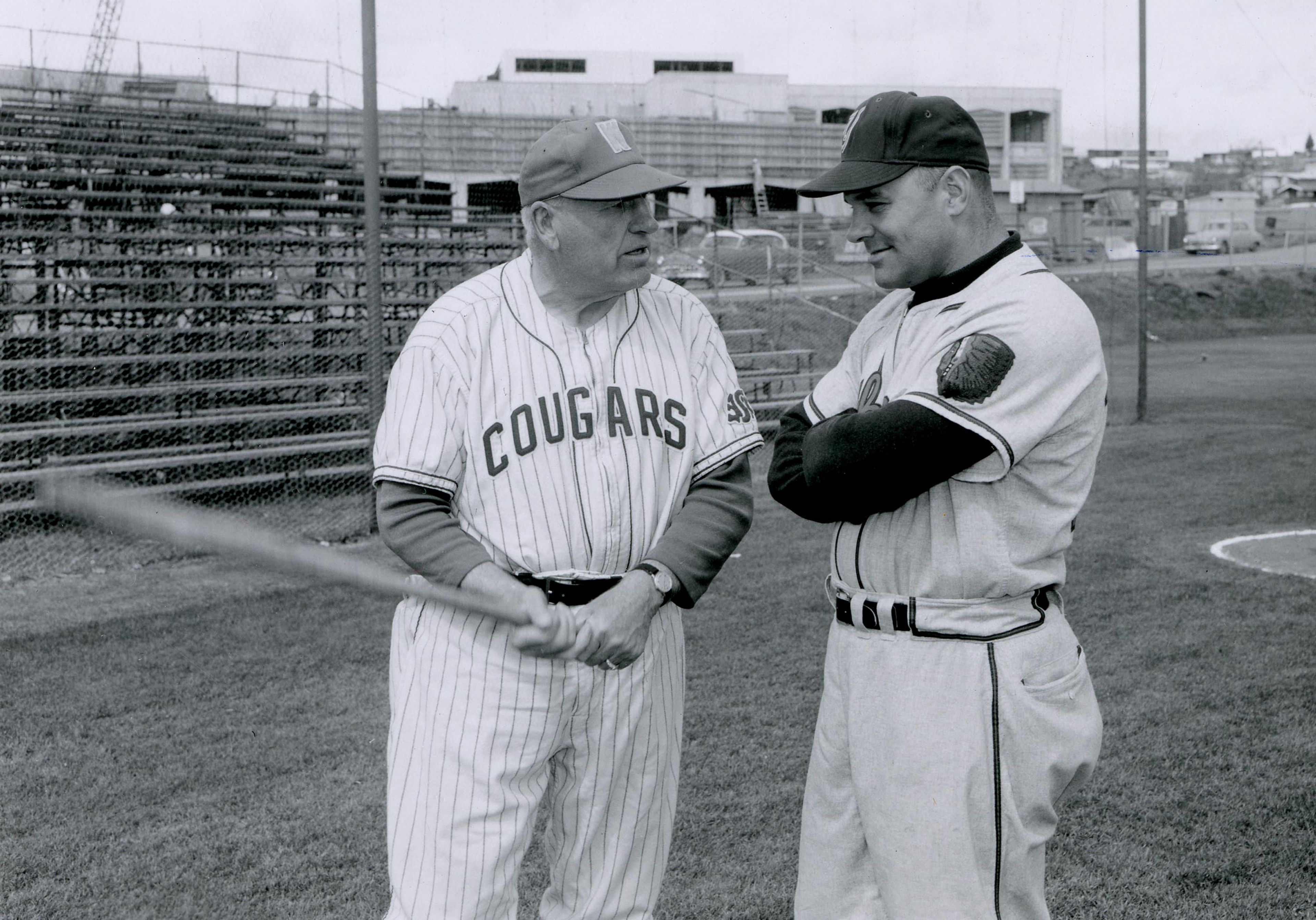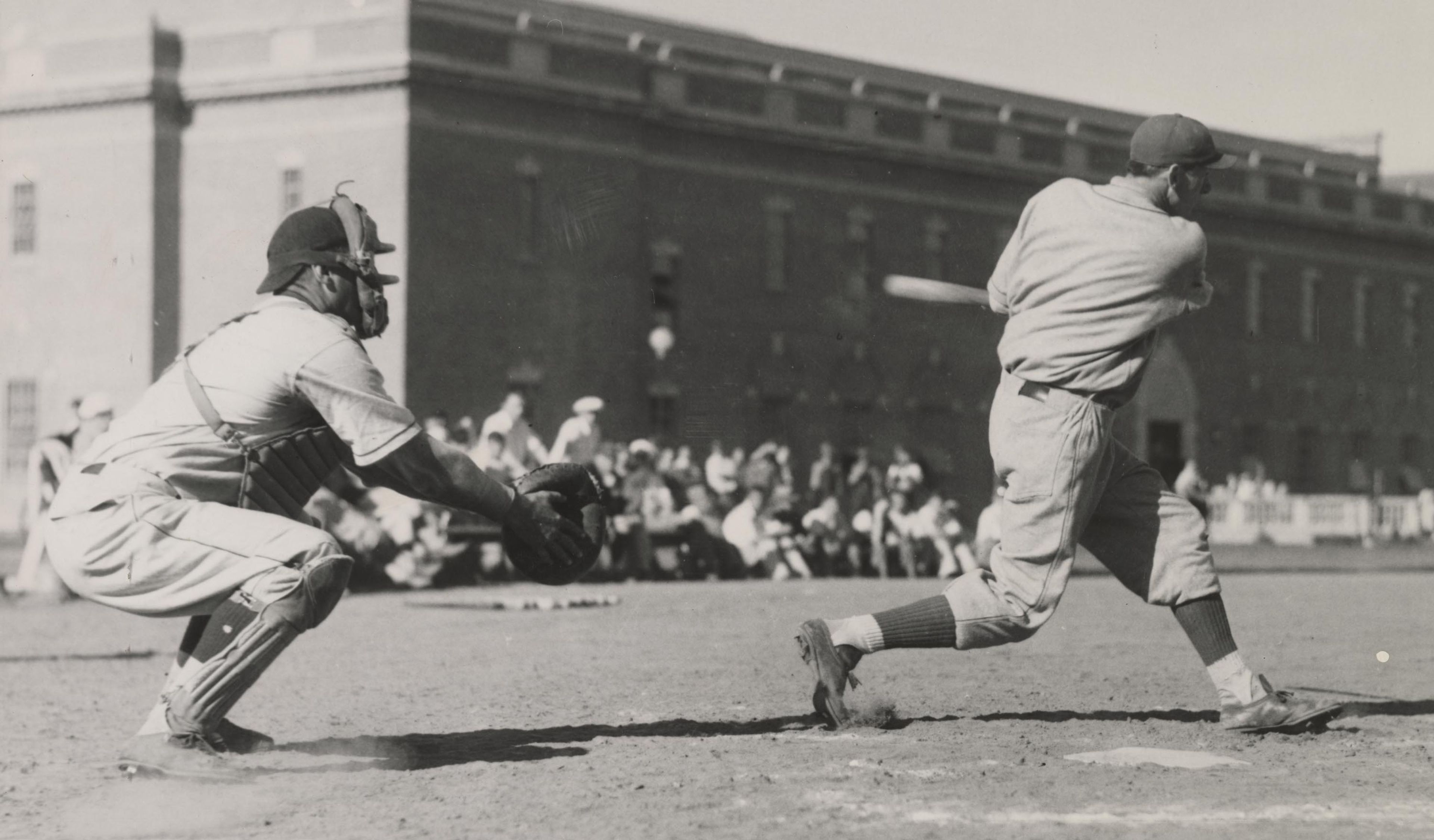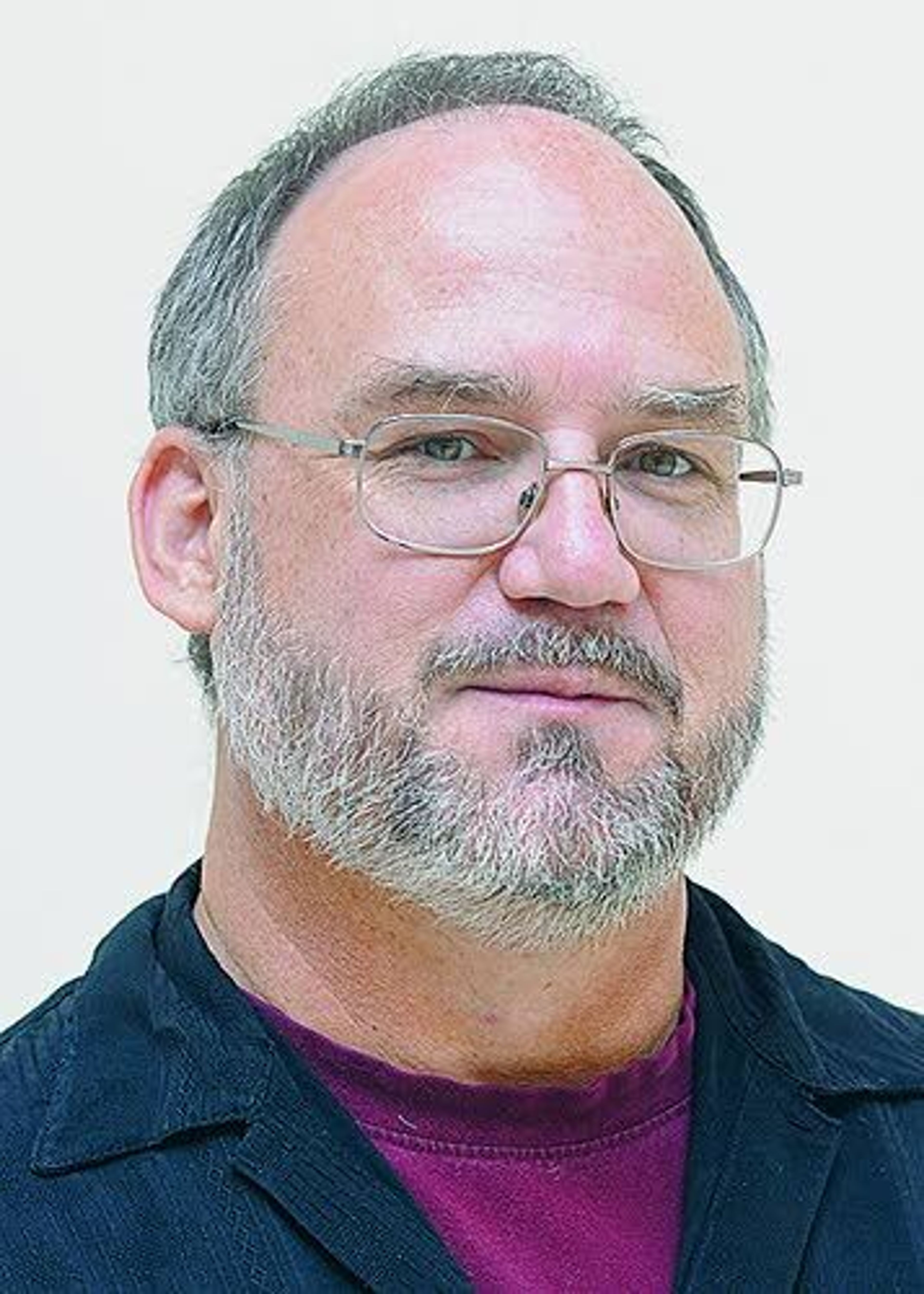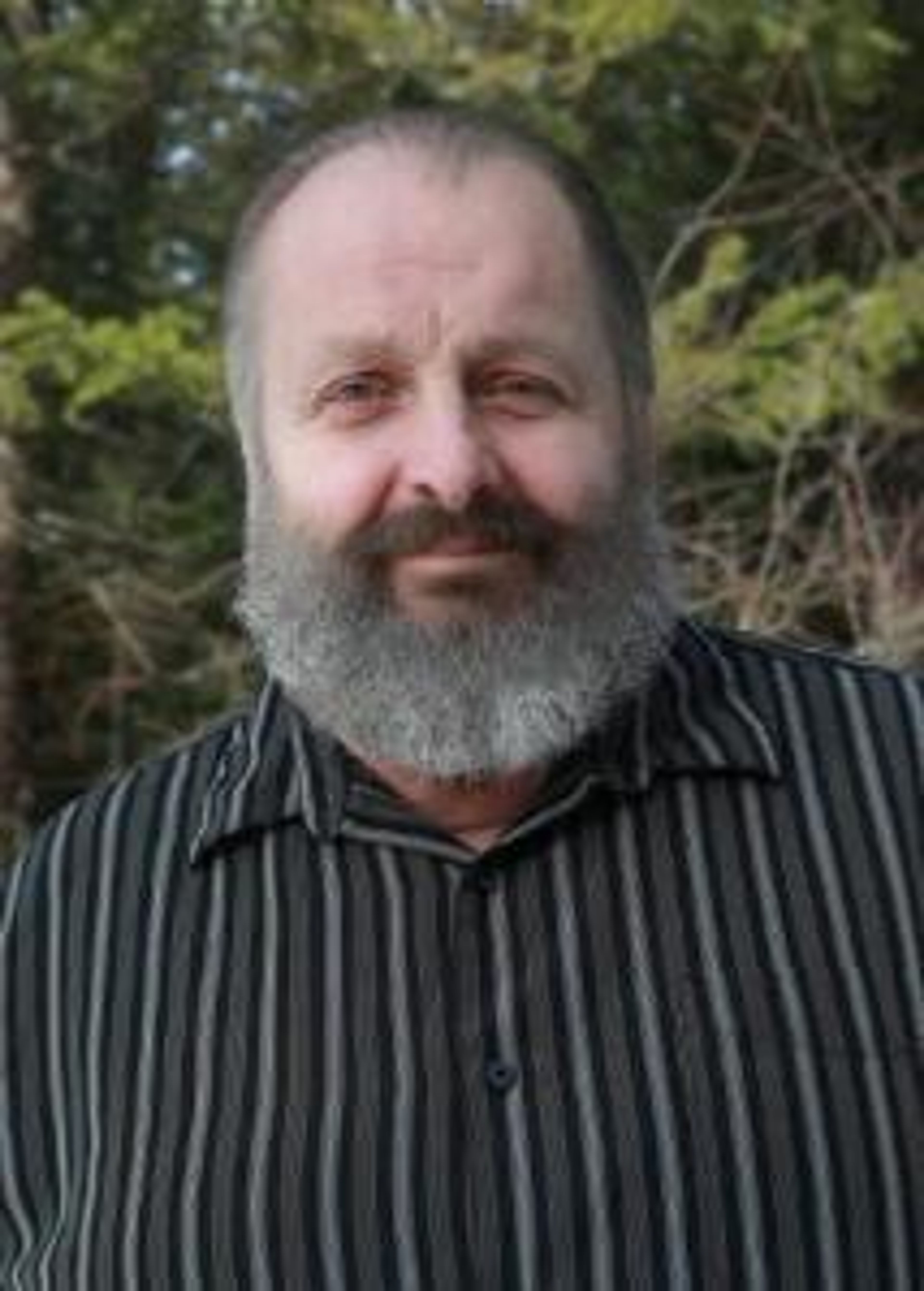Nearby History: Swingin’ Cougs go way back
Baseball the longest running and, arguably, the most successful sport on campus in Pullman
As each winter draws to an end, certain things mark the change of the season in Pullman. Snowdrops are a traditional Palouse sign of spring, robins are universal, and another is the return of baseball to our local fields. While the Washington State University team traditionally begins its season further south in warmer climes, this weekend is the home opener of the current crop of Cougar ballplayers.
WSU baseball has arguably been not just the most successful Cougar intercollegiate sport, but inarguably the longest running. On March 12, 1892, just shy of two months after the school first opened, the first athletic competition took place, a baseball game against crosstown Pullman Military College. The game was played on a flat pice of ground loosely where the current sewage treatment plant is, and resulted in a 26-0 victory by WSU, called at the end of the sixth inning.
In those first years, most games were played against Moscow or local high schools, but football and tennis quickly stole the limelight. WSU played 10 games in spring 1892 and then two games in fall but baseball, despite repeated efforts, went into a bit of a hiatus. One game was played in 1896, two games in 1897, and then from 1898 they’ve been off and running.
Home games were played where the current football and practice fields are until circa 1930, when the team moved to its own diamond at the southeast corner of what is today the WSU track. The field was swapped to the northwest corner there in about 1950, before finally moving across Stadium Way to its current location, Bailey-Brayton Field, in 1980.
The glory days of WSU baseball are linked clearly to two specific coaches, but it’s worth first noting the team almost always has been successful. Of the 17 men who’ve been head coach on more than an interim basis, all but four have had winning records over their time here. However, WSU baseball history belongs to the two men their field is named after, Arthur “Buck” Bailey and Chuck “Bobo” Brayton, who between them coached virtually every Cougar game from 1927 to 1994, missing only the World War II years. They combined for 35 conference titles and four College World Series appearances, peaking with a second place at the 1960 national championship.
Since the first Major League Baseball draft in 1965, WSU has had 166 players drafted, and over the course of MLB history, about 38 Cougars have been called up to the majors. The first ballplayer from WSU (then WSC) to play in the major leagues was shortstop Art McLarney, who was called up by the New York Giants on Aug. 23, 1932, in a game at the Pittsburgh Pirates. In the ninth inning, with the Giants down one run, he was put in to pinch-run with nobody out, but three popups ended the game with him still stranded on first. He would only play eight more games, all in that season, but the ground was broken, and other Cougars followed.
Perhaps the most unfortunate major leaguer was Terrell Hansen, WSU’s own version of Field of Dreams’ Moonlight Graham. Hansen was called up by the Mets on April 30, 1992, and was with the team only two games before going back down to the minor leagues. At one point he had the bat in his hands and was heading for the on-deck circle when the coach decided to put in someone else; Hansen would never reach the playing field.
At the other end are nationally known Cougar players like Ken Phelps, Scott Hatteberg, Ron Cey and others. Two in particular, Aaron Sele and John Olerud, approach the status of northwest legends after their successes with the Seattle Mariners, each an integral part of the 116-win 2001 team.
As winter draws near to an end and we cross our fingers for blue skies and no rain or snow, about 40 young men at WSU, and similar groups at other schools, are putting on their uniforms for another season. Taking the field with them are not just the hopes of a new year and the dreams of their fans, but the struggles, the successes and the stories and memories of those who have come before them.
Play ball!
O’English is the university archivist for the Manuscripts, Archives and Special Collections at Washington State University.
